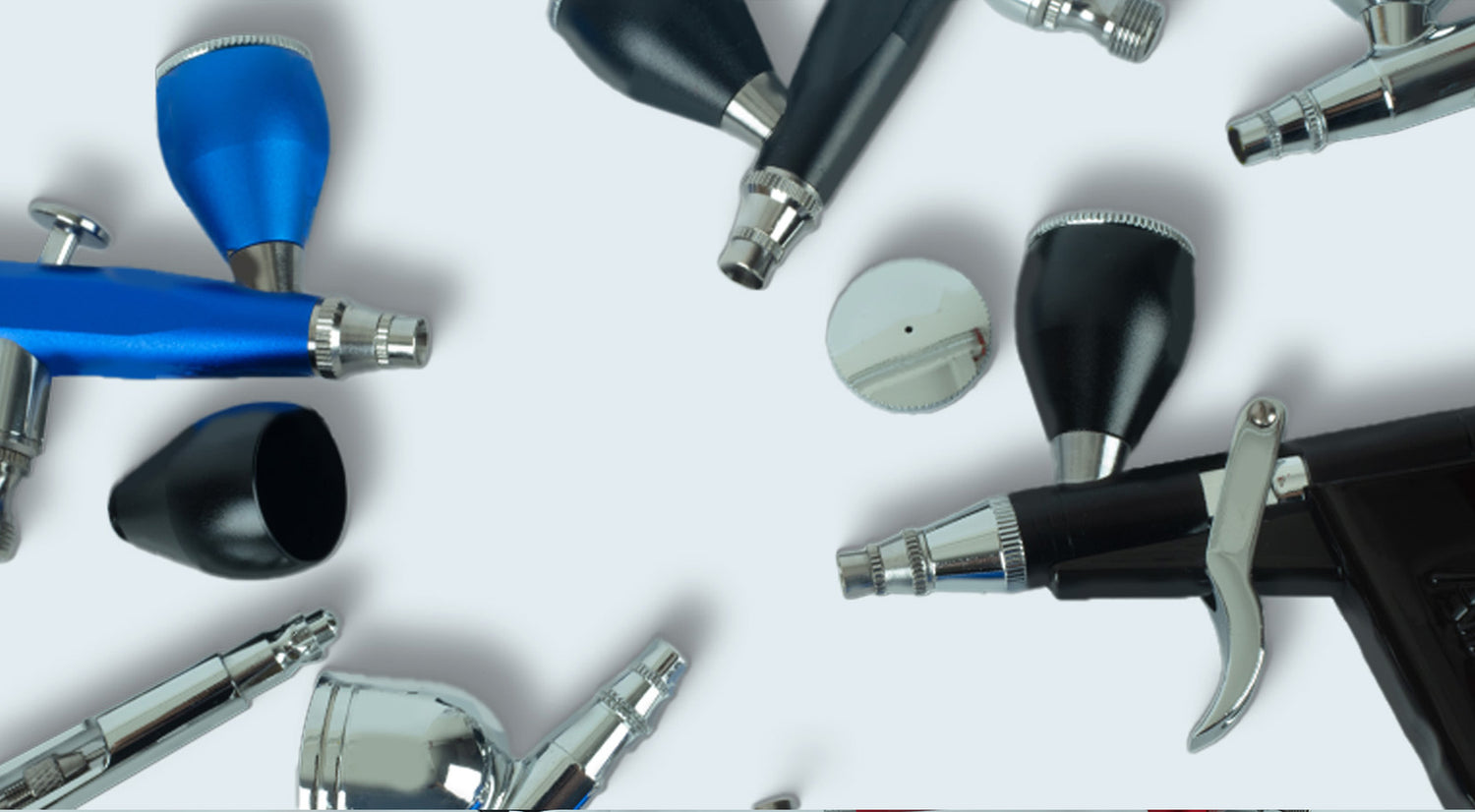
How to Choose an Airbrush
Share
Choosing the Right Airbrush for Your Projects
An airbrush is a versatile tool ideal for various applications, from painting model vehicles and decorating t-shirts to creating intricate cake designs. When selecting the best airbrush for your needs, consider a few key factors: the feed type, tip sizes, mixing method, and action type. Let’s explore each of these aspects to help you make an informed decision.Single vs Dual Action Airbrushes
The trigger mechanism distinguishes single action from dual action airbrushes.
Single Action: In this type, pulling the trigger releases air, which atomizes the paint. You control paint volume by adjusting a fluid needle, making it user-friendly for beginners and larger patterns. However, you cannot alter paint flow while spraying, which limits flexibility.
Dual Action: This design allows you to control both air and paint volume with one trigger. Pressing down releases air, while pulling back dispenses paint—more pull means more paint. This offers greater control and is better suited for detailed work, making it a preferred choice among professionals.
Gravity Feed vs. Siphon Feed vs. Side Feed Airbrushes
The feed type impacts how paint is delivered to the nozzle.
Gravity Feed: With a cup on top, gravity feed airbrushes can operate at lower pressures, making them ideal for detailed work. They’re generally easier to clean but hold less paint than siphon feed models.
Siphon Feed: This type features a cup underneath, allowing for larger paint capacity, which is beneficial for extensive projects. It requires fewer refills, making it practical for larger applications.
Side Feed: Combining the advantages of both gravity and siphon feeds, side feed airbrushes can hold more paint and work well at low pressures. However, they can be tricky to clean and may be prone to leaks, which affects their popularity.
Internal vs. External Mix
Another important consideration is the mixing method of paint and air.
External Mix: In this setup, paint and air mix outside the airbrush. While they can handle thicker paints better, they generally produce broader patterns and are less common for fine detail work.
Internal Mix: Most airbrushes utilize this method, mixing paint and air inside the tool. They offer finer atomization and are preferred for achieving detailed lines.
Tip Sizes
Tip size is crucial in determining the airbrush's versatility. Common nozzle sizes range from 0.2mm to 0.7mm.
- A larger tip size can handle thicker materials but results in wider lines.
- A 0.5mm tip is often considered a good all-purpose choice.
- For detailed work, tips of 0.5mm and smaller are ideal, while larger tips (0.5mm and above) are better for broad coverage. An airbrush set with multiple tips provides the greatest flexibility for various projects.
Final Thoughts
Selecting the right airbrush depends on your experience level and the types of projects you plan to undertake. Here’s a quick summary to guide your choice:
- For versatility: Opt for a dual action airbrush with multiple tips.
- For detailed work: A gravity feed airbrush is recommended.
- For larger patterns: Consider a siphon feed airbrush.
- For ease of use: A single action siphon feed airbrush with a 0.5mm tip is a solid option.
